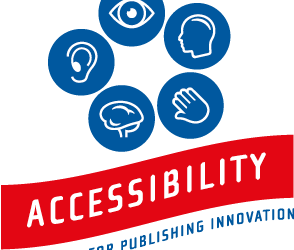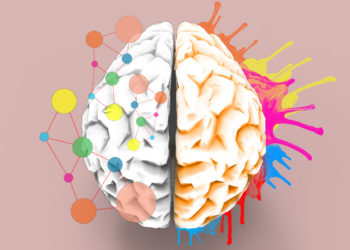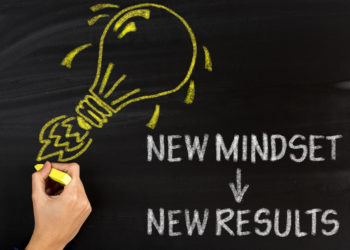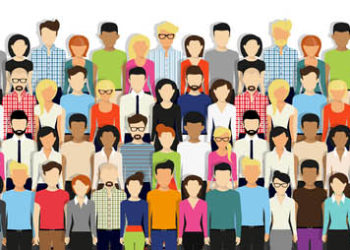Editor’s Note: Today’s post is by Betsy Beaumon CEO of Benetech, the leading software for social good nonprofit. As Benetech’s CEO, she is responsible for driving the vision and growth of all Benetech initiatives including Bookshare, the world’s largest online provider of accessible books for people with reading barriers such as cerebral palsy, dyslexia, or visual impairment. Through this initiative, Benetech has delivered over 15 million accessible ebooks, enabling people to further their education, develop professional skills, and engage more fully in their communities. A social entrepreneur and engineer, Betsy defined the concept of “Born Accessible,” a vision where all digital content is made accessible to everyone when created.
Microsoft program manager, Brian Meersma, graduated with honors from Cornell University in 2018. Like any college student, his coursework included ample writing assignments and an ambitious reading list. Brian was diagnosed with severe dyslexia at a young age. It was difficult for him to read, write, and spell, but since finding the right assistive technology in middle school, Brian has flourished. Reading accessible ebooks on his iPad, Brian was able to complete his work, graduate top of his class at Cornell, and land a job in his desired field.
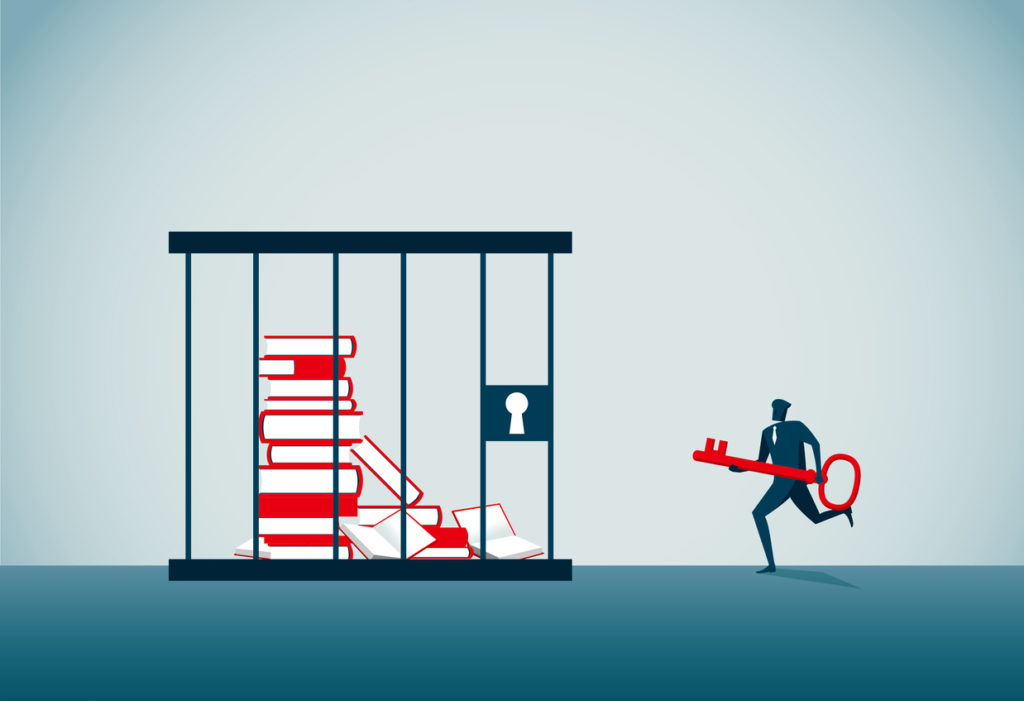
But many others with disabilities find their employment opportunities limited. According to the United Nations, there are one billion people with disabilities worldwide; An estimated 470 million of them are of working age. The employment rate for persons with disabilities of working-age in developed countries is as low as half the rate of their non-disabled peers. People in developing countries have it even tougher, with employment rates of just 10-20% for working age people with disabilities
How can such inequities be addressed to create a more inclusive world? As Brian can attest, technology is part of the answer, but it can build more roadblocks as well as creating more opportunities. For more people like Brian to succeed, we must also create a culture of inclusion. All of us in the world of scholarly publishing, research, and technology have a significant role to play in this important evolution.
Technology Innovation Drives Change, for Better and Worse
Advances in technology are changing the expectations of consumers, the geographic reach of solutions, and the very definition of publishing. Tech giants, including Microsoft, Apple, Amazon, and Google, are continually innovating around the interfaces between consumers, creators, and information, and they have become leading advocates for inclusion. Along with a wide range of startups, they are supplying new solutions that can revolutionize lives. Home automation may allow seniors to stay in their homes longer and ease the chronic shortage of caregivers for people with severe disabilities. Combined with specialized assistive technologies, these tools are even more powerful for people with disabilities. Artificial Intelligence (AI) is already being used to great effect, from auto-transcription that allows people who are deaf to attend more scholarly talks, to AI-driven smart glasses that help blind individuals to interact with the world more fully, and tools such as Benetech Math Detective, which uses AI to include accessible math in textbooks.
But there are also downsides to these new and exciting technology innovations, especially for people who are already marginalized by society. A network of tools in the home that tracks our most sensitive data, such as health status for those with disabilities, has major privacy implications. The AI aspect of such services has real potential for bias. AI is fed by data and, if the data feeding the algorithms are biased, then the resulting algorithms will be as well, although this will often not be obvious to humans. Hiring algorithms, smart cities full of data-driven transportation, and personalized learning tools are all such products. The level of bias already observed against anyone outside the mainstream of the original data is a cause for concern and action.
Technology in the broad sense is neither good nor bad; it comes down to how it is applied.
Thoughtful Design and a Culture of Inclusion
Many people are familiar with the concept of universal design in architecture, and laws that enforce common practice such as the Americans with Disabilities Act (ADA) in the U.S. or the United Nations Convention on the Rights of Persons with Disabilities (UNCRPD) elsewhere in the world. Because of these laws, many people can work, eat at restaurants, and get government services they could not receive earlier in my lifetime. While there are still cultural norms that prevent full inclusion in the physical environment, what about the digital world that is increasingly important to all of our lives?
When it comes to designing products and solutions for people with disabilities, most software products fail before one line of code is written, and content fails at multiple points in the chain of creation and distribution. Laws addressing the accessibility of content are being passed across the country to require institutions that use state funds to provide fully accessible content. Like curb cuts on sidewalks, most of the solutions for digital accessibility also create better products for everyone. Yet, designers and developers do not necessarily consider people with disabilities among their target users, so they skip such universally beneficial approaches. And this problem is exacerbated in newly industrialized nations because of the low levels of access to digital technologies by people with disabilities, likely due to lower socioeconomic status and low employment rates – a vicious cycle.
What is the solution? Make sure that tools used in all parts of the content creation and publishing process are accessible; follow accessible content guidelines that exist around the field and hire or develop the expertise to design and implement them. One way to achieve these goals is to include the perspectives of people with disabilities in the design and development process, or, even better, hire people with disabilities who have the knowledge and experience to be inclusive in their work. One “lead by example” comes from tech giants like SAP and Google who understand that future employees will come from the developing world, and have introduced more than 1.8 million young Africans to coding skills – including coders who are deaf — to make their ecosystem more inclusive.
The Scholarly Publishing Field Can Make a Difference
In his July 29 blog post, Simon Holt noted that the publishing industry needs to be open to changing established ways of working that are unintentionally excluding people. I agree and have confidence that publishers and the publishing ecosystem can and will create possibilities for people with disabilities and together make the world far more inclusive, better serving users who may not be accessing content via traditional means.
Excluding scholars from this ecosystem has a lasting, negative, ripple effect for individuals and their potential impact in the world. Accessibility is not just about books and journals, it’s about making the whole ecosystem accessible: from research materials and coursework to authoring and statistical tools. The definition of publishing is expanding rapidly, with increasing demands to publish the data used in research and even the software used to do the research. Every one of these components needs to be accessible. And please, never utter my least favorite phrase, “We’ll worry about people with disabilities later.”
Instead, as you review the accessibility of your products today, remember that your content is only as good as the access that users have to it, and embrace this simple but revolutionary thought:
Everything born digital must be, and can be, born accessible.
October is accessibility awareness month, and today (October 4) happens to be World Dyslexia Day. Why not use this day/month to think about how publishers can include, celebrate, and enable persons with disabilities to contribute their talents to the world.
Here are some starting points:
- Join 870 other publishers and contribute digital book files directly to Benetech’s Bookshare ebook library — to enable over 650,000 users to engage with the ideas that these books present, and broaden the academic conversation with their own research and insights
- Become a Global Certified Accessible publisher to build “born accessible” content and ensure everyone has access to materials critical for education
- Join Benetech and other accessibility leaders in driving solutions for the next level of accessibility content challenges posed by images, interactivity, math equations, and other complex features
- Join the Society for Scholarly Publishing in spreading the word and encouraging a culture of inclusion. Why? Because we need more perspectives from exceptional colleagues
You are the thinkers and pacesetters who can help lead this revolution of possibility.
Are you ready?
Discussion
5 Thoughts on "Guest Post — Why Inclusion Matters to Technology and Technology Matters to Inclusion"
I wasn’t able to be at the SSP conference this year but this presentation was one of the ones I was particularly interested in so thank you for turning it into a blog post. It is always so important to check at the outset who is being excluded with any decisions that are made in scholarly publishing. Thank you for highlighting this in the case of people with disabilities.
This is a fantastic piece. I like, in particular, how this piece talks about the societal impact of smart technology (mostly or better but sometimes for worse). We should also note that many innovations that were initially designed for people with disabilities have had huge impacts on society generally – text messaging (initially designed for the hearing impaired) and thumbprint-unlocking (initially designed for visually impaired people) are two such examples. Inclusion is really about when we stop using ‘us’ and ‘them’, and when ‘assertive technology’ just becomes ‘technology’. We’ve still got a long way to go in this sense.
Excellent post, Alice and Betsy, here’s the link to the recording of Betsy’s keynote talk at the SSP Annual meeting in San Diego, enjoy! https://www.sspnet.org/library/why-inclusion-matters-to-technology-and-technology-matters-to-inclusion/
Excellent information in this article. But I’m having trouble understanding these two statements:
The employment rate for persons with disabilities of working-age in developing countries is as low as half the rate of their non-disabled peers. People in developing countries have it even tougher, with employment rates of just 10-20% for working age people with disabilities.
Perhaps the first sentence should say “in developed countries”?
